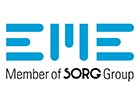Artificial intelligence simulates human thought processes. It can detect and process images, recognise language, make decisions, and translate into different languages. But can it also work without humans?
AI is a perfect match for image processing, as the cameras continuously collect, filter and evaluate data. In conversation with the Glass Technology Forum, Bertrand Mercier, Vice President of Business Unit Glass at ISRA Surface Vision, explained what customers can and cannot expect of artificial intelligence:
“AI does not work without human input, even if the process is aimed at becoming independent of people. For instance, OPC UA is used as a standardised language between machines. AI is fed with information and corrected when it interprets the data incorrectly, making it similar to the learning processes of a child. This is a continuous process, with constant corrections gradually reducing the error rate. A machine must always recognise a pattern. It learns what the specific error patterns look like and how to differentiate between them independently, for example between a stone and a bubble in the glass. These properties must be programmed in advance. In the glass industry, they can be typical features such as stains, scratches and bubbles, or process faults such as coating defects, chips or water drops. Therefore, you can’t have AI at the touch of a button.
If you read about technology and growth today, a focus is placed on the concepts of big data, artificial intelligence (deep learning and machine learning) and the value of analysing this data. Effective data analysis allows requirements to be predicted in advance or trends to be recognised; the system can then optimise processes and react to changes before a human has even seen the data.
These large quantities of numbers mean it is impossible to determine the best configuration using a brute force approach via a computer, as AI only works with human input. Ultimately, it is about automated solutions to complex learning problems that are difficult to program using conventional methods.
What can a customer who purchases AI expect? When using a rules-based approach in image processing, you compare defect patterns of the same defect type in order to identify similarities and define segregation rules. Although this is sufficient for applications with defect types that can be separated clearly, years of training are required to generate the rules and defect patterns.
“AI doesn’t work without human input.”
By contrast, AI-based classifiers need training data. When taking a machine learning approach (feature-based classification), the system is continuously trained in line with the user’s own needs using a decision tree or by identifying the most similar defect – classification therefore takes place according to features such as geometry, statistics or frequency. This enables classification structures of medium complexity to be generated automatically and improved directly by the user. The quantity of features inevitably determines the classification quality here.
Deep learning (picture-based classification) does away with feature extraction – it is the task of the neural network to learn this. It works with representative image data with convolutional layers, the filters. The system learns the features and classifies with the greatest precision when using a sufficiently large and good image data set.
Yet this is also not a fully automated approach, as both the performance spectrum and the complexity are constantly rising as a result of factors such as the self-learning approach. The user certainly requires up-to-date expertise and very well-trained, specialised staff.”
Important links:
glass.vdma.org
www.isravision.com
Conatct: Bertrand Mercier, ISRA SURFACE VISION GMBH, bmercier@isravision.com
Do you have any questions? Gesine Bergmann, Glass Technology Forum,
Phone +49 69 6603 1259, gesine.bergmann@vdma.org, will be happy to answer them.
The VDMA represents around 3,300 German and European mechanical and plant engineering companies. The industry stands for innovation, export orientation, medium-sized businesses and employs around four million people in Europe, more than one million of them in Germany alone.



























